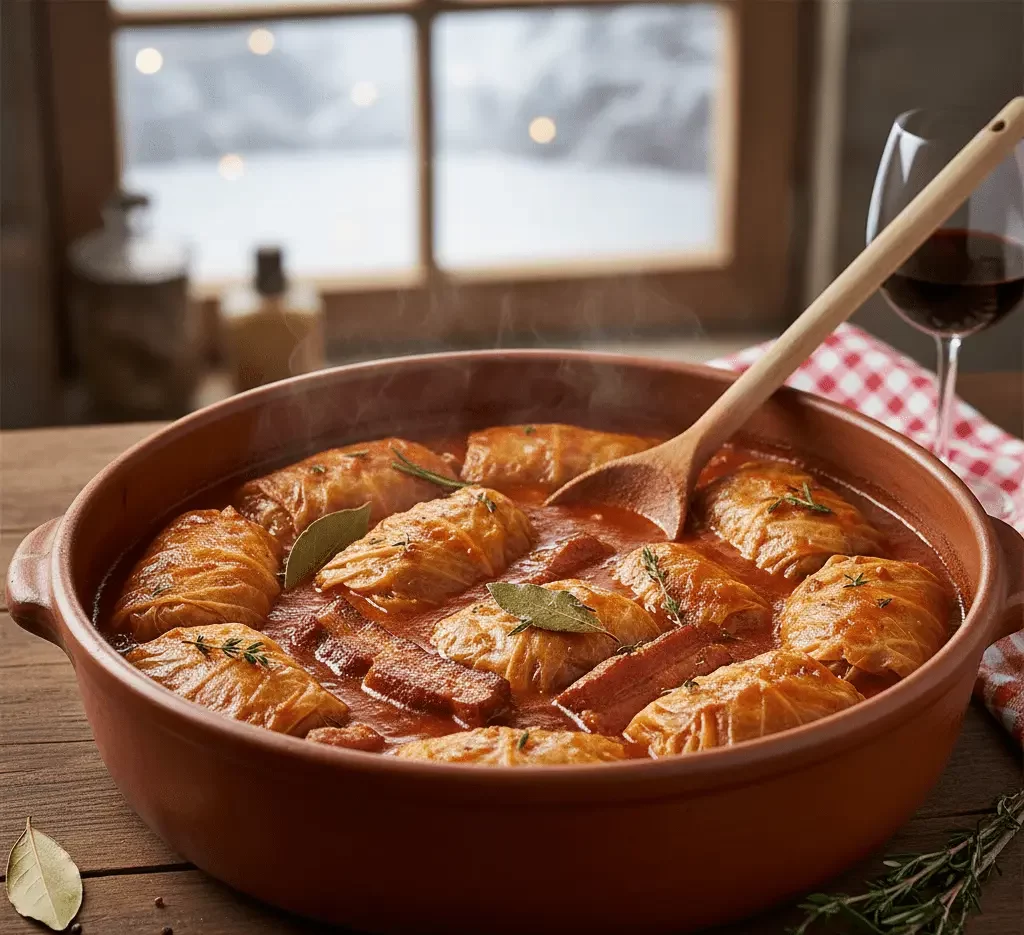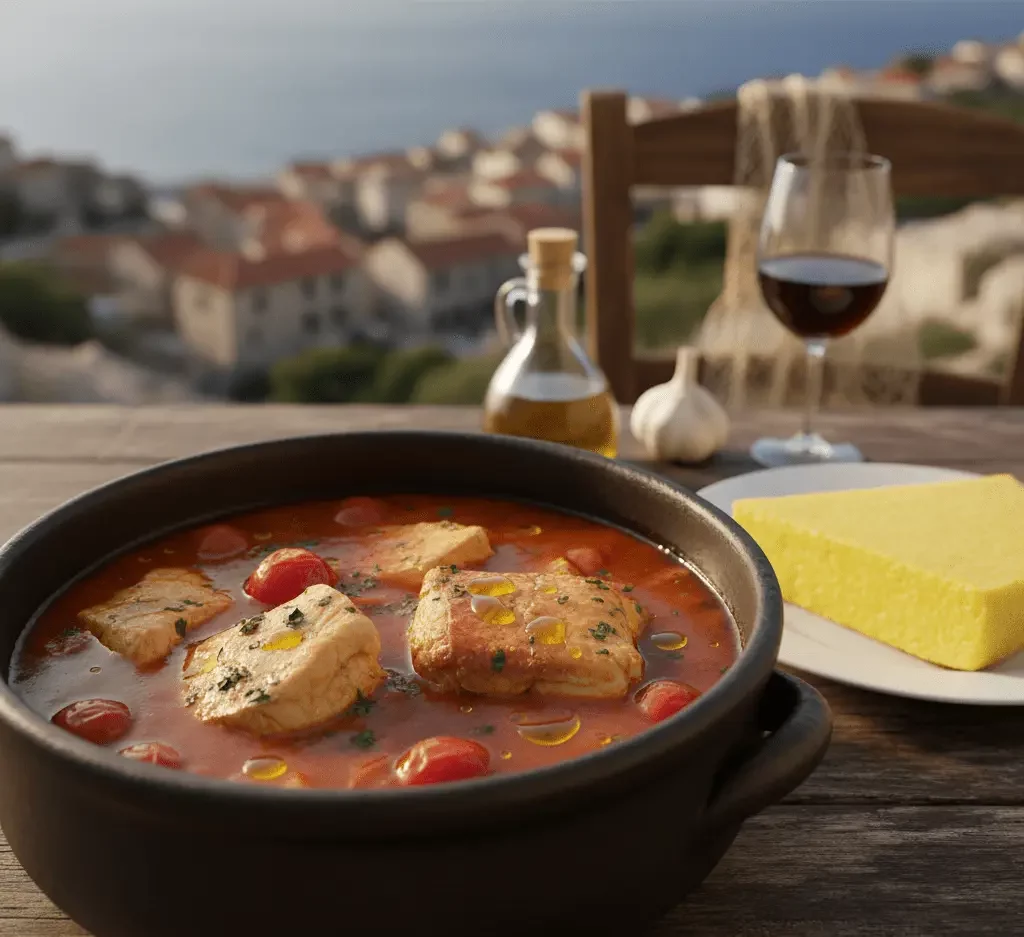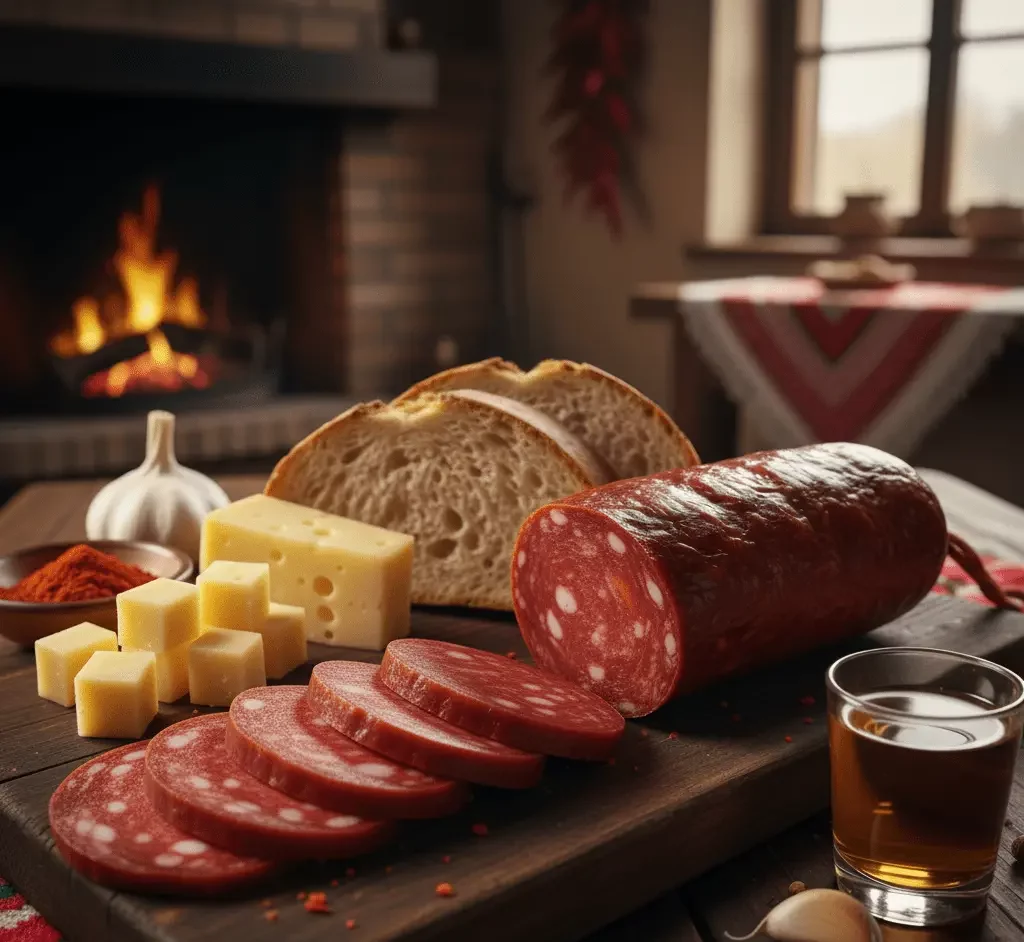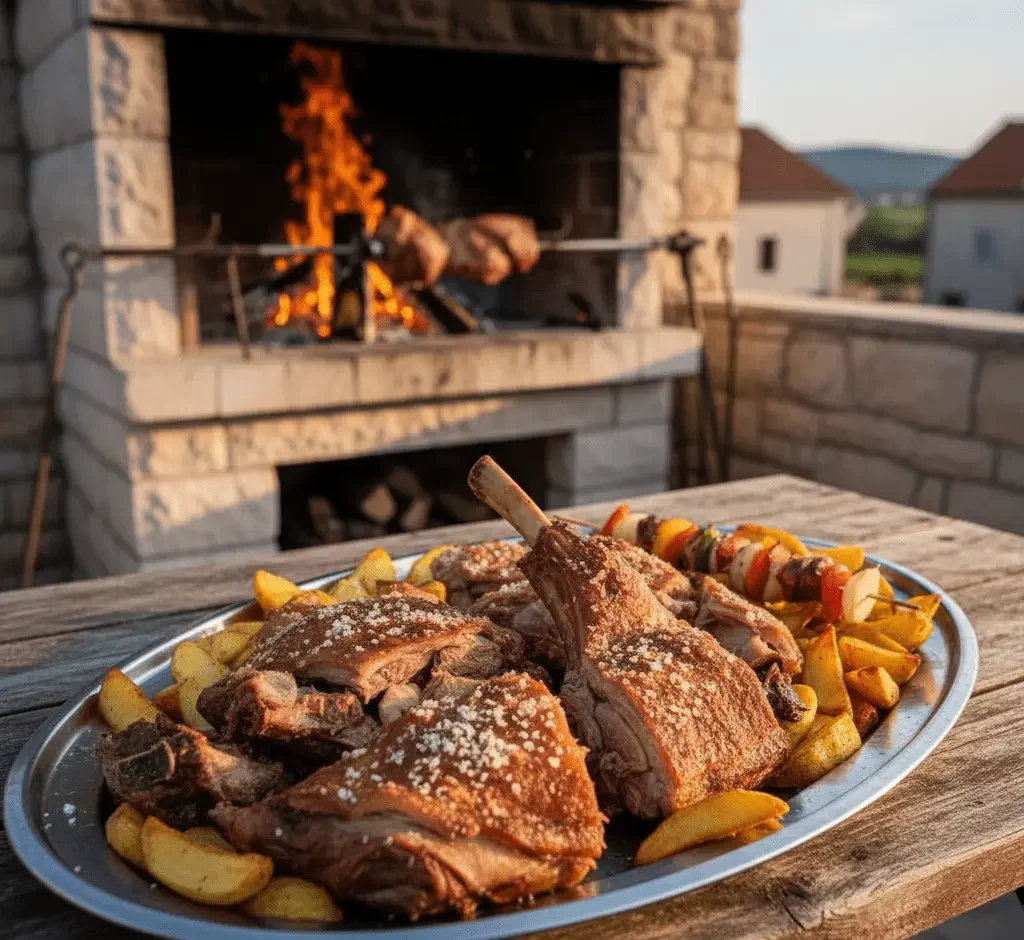What are the most famous traditional Croatian dishes?
Croatian cuisine offers a rich tapestry of flavors, drawing from Mediterranean, Balkan, and Central European traditions. This guide highlights 10 traditional Croatian dishes that reflect the culinary soul of different regions — ideal for food travelers and gastronomy lovers.
1. Peka (Under-the-Bell Cooking Method)
What is peka and why is it special?
Peka is a traditional Croatian way of slow-cooking meat or seafood with vegetables under a bell-shaped lid covered in embers. This method brings out deep, smoky flavors.
Key facts about Peka:
Common ingredients: lamb, veal, octopus, potatoes, rosemary, garlic
Cooking style: under iron bell (ispod peke), cooked for 2+ hours
Popular in: Dalmatia and rural coastal villages
Where to try it:
Look for small, family-owned konobas in Split, Hvar, or Brač. Most require advance booking due to cooking time.

2. Pašticada (Dalmatian Beef Stew)
Why is pašticada a festive dish in Dalmatia?
This sweet and sour beef stew is slow-cooked in wine with dried fruits and served with gnocchi. It’s a signature dish for special occasions.
What’s in pašticada?
Marinated beef (24+ hours)
Red wine, vinegar, onions, prunes, carrots
Served with homemade gnocchi
Where it’s best:
Restaurants in Split and surrounding Dalmatian towns. Variations exist, but authentic versions include a slow simmer and overnight marinade.

3. Crni Rižot (Black Risotto)
What is black risotto in Croatia?
Crni rižot is a seafood risotto dyed with squid or cuttlefish ink. It’s a staple in coastal towns and a favorite among locals.
Ingredients in Crni rižot:
Cuttlefish or squid (and its ink)
Onion, garlic, olive oil, parsley
Often includes a splash of red wine
Ideal for seafood lovers:
Try it in Dubrovnik, Rovinj, or Split’s old town. Best enjoyed fresh, near the sea.

4. Sarma (Stuffed Cabbage Rolls)
What is sarma and when is it eaten?
Sarma is a winter staple made of minced meat and rice wrapped in pickled cabbage leaves, slow-cooked in tomato sauce.
Sarma essentials:
Meat: pork and beef mix
Base: fermented cabbage (kiseli kupus)
Often cooked in bulk and eaten for days
When it’s served:
Holidays (especially Christmas and New Year)
Traditional winter lunches across Croatia

5. Fuži with Truffle Sauce (Istrian Pasta)
What are fuži and how are they paired with truffles?
Fuži are handmade pasta from Istria, often served with a creamy truffle sauce made from local black or white truffles.
Istria’s truffle dish includes:
Homemade pasta (fuži)
Cream-based truffle sauce
Often topped with shaved truffles
When and where to eat it:
Truffle season: September to December
Best towns: Motovun, Buzet, Grožnjan

6. Brudet (Croatian Fish Stew)
What is brudet and why is it popular?
Brudet is a fisherman’s stew made from various fish, simmered in a tomato and wine broth. It reflects Croatia’s fishing tradition.
Ingredients typically include:
Multiple types of fish (whatever’s fresh)
Onion, tomato, vinegar, olive oil
Served with polenta
Regional notes:
Dalmatian coast has garlic-rich versions
In Istria, brudet may include shellfish

7. Štrukli (Cheese Pastry from Zagorje)
What are štrukli and how are they served?
Štrukli are filled dough rolls with a cottage cheese filling, boiled or baked, sometimes topped with cream.
Why people love štrukli:
Comfort food of northern Croatia
Sweet or savory options
Served hot with sour cream
Best place to try:
Continental Croatia.

8. Kulen (Spicy Slavonian Sausage)
What is kulen and where does it come from?
Kulen is a paprika-rich, fermented sausage from Slavonia, known for its intense, smoky flavor.
Kulen facts:
Made from high-quality pork
Seasoned with garlic and paprika
Smoked and air-dried for months
When to eat it:
As a cold appetizer
With bread, cheese, and rakija

9. Janjetina s Ražnja (Spit-Roasted Lamb)
How is Croatian lamb traditionally prepared?
Janjetina is roasted whole on a spit over open fire. It’s a celebration food that reflects Croatian shepherding tradition.
Lamb roasting highlights:
Minimal seasoning: usually just salt
Slow-rotated over open flame
Served with potatoes or ražnjići (skewers)
Best regions for lamb:
Island of Pag
Hinterland near Imotski and Sinj

10. Fritule (Croatian Doughnuts)
What are fritule and when are they eaten?
Fritule are small, round pastries often flavored with rum, citrus, and raisins — a staple of festive gatherings.
Typical ingredients:
Flour, eggs, milk
Lemon/orange zest, rum or rakija
Dusting of powdered sugar
When and where to enjoy them:
Christmas markets
Coastal street vendors year-round

Summary: Why These Dishes Represent Croatia’s Culinary Identity
Why try traditional Croatian food?
These dishes offer insight into Croatia’s regional diversity, seasonal eating habits, and family traditions.
Highlights by region:
Coast: Peka, crni rižot, brudet
Inland: Pašticada, sarma, štrukli
Istria: Fuži with truffles
Slavonia: Kulen
Festive treats: Fritule, janjetina
Best time to experience Croatian cuisine:
Summer (fresh seafood)
Winter (hearty stews and sausages)
Autumn (truffle and wine season)
Frequently Asked Questions (FAQ)
What is the national dish of Croatia?
While Croatia doesn’t officially have a designated national dish, several meals are widely recognized as emblematic of the country’s culinary heritage. Peka, a slow-cooked dish made under an iron bell, is considered one of the most traditional and unique, especially in Dalmatia. Pašticada, a sweet and sour beef stew from the south, is another favorite often served during special occasions. In inland regions, especially during winter, sarma—cabbage rolls stuffed with meat and rice—is considered a household staple. The diversity of cuisine makes it difficult to choose just one national dish, as each region has its own “signature” meal.
Is Croatian food spicy?
Traditional Croatian cuisine is generally not spicy. Most dishes focus on natural flavors from herbs like rosemary, bay leaves, parsley, and garlic rather than hot spices. However, certain regional specialties, like kulen from Slavonia, have a mild to moderate spiciness due to the generous use of red paprika and garlic. If you’re sensitive to spice, you can still enjoy the vast majority of Croatian meals without concern. Spice levels are usually well balanced and never overpowering.
Are Croatian dishes vegetarian-friendly?
Many of the most well-known traditional Croatian dishes are meat-based, such as peka, pašticada, and sarma, which may make it challenging for strict vegetarians. However, there are still several vegetarian-friendly options depending on the region. In northern Croatia, štrukli (cheese-filled dough) can be a satisfying and rich meat-free dish. Istria offers delicious truffle-based pastas, and vegetable-rich meals like blitva s krumpirom (Swiss chard with potatoes) are common side dishes that can be enjoyed on their own. While vegetarian options may not be the centerpiece of traditional cuisine, they’re increasingly available in restaurants, especially in urban and tourist areas.
What drinks pair best with Croatian traditional dishes?
Croatia offers a wide variety of regional wines and spirits that perfectly complement its cuisine. Coastal dishes like crni rižot and brudet pair beautifully with white wines such as Pošip, Malvazija, or Grk. For heartier inland meals like sarma or pašticada, opt for reds like Plavac Mali, Teran, or Dingač. Don’t miss trying rakija, a fruit brandy often served as a digestif, and pelinkovac, a herbal liqueur. Each region has its specialties, so ask locals or servers for the best wine pairing recommendation.
